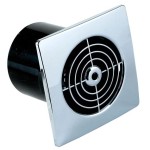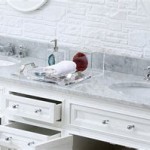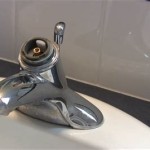Can You Put Vinyl Flooring in a Bathroom? A Comprehensive Guide
Vinyl flooring has become a popular choice for homeowners renovating or building bathrooms. Its affordability, durability, and water resistance make it an attractive alternative to traditional bathroom flooring options such as tile or hardwood. However, the suitability of vinyl flooring in a bathroom environment requires a nuanced understanding of its various types, installation methods, and potential drawbacks. This article provides a comprehensive guide to help determine if vinyl flooring is the right choice for a particular bathroom.
Vinyl flooring encompasses a broad category of synthetic flooring materials, primarily composed of polyvinyl chloride (PVC) and other plasticizers. It is available in several formats, including sheet vinyl, vinyl tiles, and luxury vinyl planks (LVP). Each format offers distinct characteristics and advantages depending on the specific application and budget.
Sheet vinyl, the most traditional form, is sold in large rolls that are cut to fit the dimensions of the room. This minimizes seams, making it inherently water resistant. Vinyl tiles, typically square or rectangular, allow for more intricate patterns and easier replacement of damaged sections. LVP, engineered to mimic the look of hardwood, offers a more realistic aesthetic and increased durability compared to traditional vinyl options. The choice among these formats depends on factors such as desired aesthetics, budget constraints, and the level of water resistance required in the bathroom.
Understanding Water Resistance and Waterproofing in Vinyl Flooring
The terms "water-resistant" and "waterproof" are often used interchangeably, but they represent distinct levels of protection against moisture. Water-resistant flooring can withstand moisture exposure for a limited period, repelling surface water and preventing immediate absorption. However, prolonged or excessive water exposure can still lead to damage, such as warping or discoloration. Waterproof flooring, on the other hand, is impervious to water penetration, preventing any moisture from seeping through the surface or damaging the subfloor. Most vinyl flooring products marketed for bathroom use are designed to be waterproof, but it is crucial to verify the specific product’s specifications to ensure it meets the required level of protection.
The key to a waterproof vinyl floor in a bathroom lies not only in the inherent properties of the material itself but also in the quality of the installation. Even the most waterproof vinyl flooring can be compromised if seams and edges are not properly sealed. Moisture can seep through these vulnerable points, leading to mold growth, subfloor damage, and ultimately, flooring failure. Therefore, meticulous installation, including proper sealing of seams and edges with appropriate caulking, is essential for ensuring long-term waterproof performance.
Sheet vinyl inherently offers better water resistance due to its seamless nature, minimizing opportunities for water penetration. With proper installation that includes a continuous, unbroken surface and thoroughly sealed edges, sheet vinyl can provide a robust barrier against moisture. Vinyl tiles and LVP, on the other hand, require careful attention to seam sealing to achieve a comparable level of water resistance. High-quality interlocking systems and specialized seam sealers are available to enhance the waterproof performance of these formats.
Factors to Consider Before Installing Vinyl Flooring in a Bathroom
Several factors should be carefully considered before installing vinyl flooring in a bathroom to ensure its suitability and longevity. These include the condition of the subfloor, the level of foot traffic, and the potential for standing water. Addressing these factors proactively can prevent future problems and maximize the lifespan of the vinyl flooring.
The subfloor, the underlying surface upon which the vinyl flooring is installed, plays a critical role in its performance. The subfloor must be clean, level, and dry. Any imperfections, such as cracks, holes, or unevenness, must be addressed before installation. A properly prepared subfloor provides a stable and even surface for the vinyl flooring, preventing indentations, buckling, and premature wear. Moisture in the subfloor can lead to mold growth and adhesive failure, compromising the integrity of the flooring. Moisture tests should be conducted to ensure that the subfloor is sufficiently dry before proceeding with the installation.
Bathrooms with high foot traffic require more durable vinyl flooring options. LVP, with its thicker wear layer and enhanced durability, is often a more suitable choice for busy bathrooms than thinner sheet vinyl or standard vinyl tiles. The wear layer, the top protective coating on the vinyl flooring, determines its resistance to scratches, scuffs, and stains. A thicker wear layer provides greater protection and ensures that the flooring maintains its appearance for a longer period. In bathrooms frequented by children or pets, considering a heavy-duty wear layer is advisable.
The potential for standing water in the bathroom should also be assessed. Bathrooms with poorly draining showers or tubs are more susceptible to water damage. In these situations, selecting a fully waterproof vinyl flooring product and ensuring meticulous seam sealing is particularly important. Adequate ventilation is also crucial to minimize moisture buildup and prevent mold growth. Installing a properly functioning exhaust fan can help remove excess humidity from the bathroom, further protecting the vinyl flooring and other surfaces from moisture damage.
Installation Best Practices for Vinyl Flooring in Bathrooms
Proper installation is paramount to the success of vinyl flooring in a bathroom. Even the highest quality vinyl flooring can fail if not installed correctly. Adhering to best practices during the installation process ensures optimal performance and longevity. This includes careful subfloor preparation, precise cutting and fitting, and thorough sealing of seams and edges.
Subfloor preparation involves cleaning, leveling, and drying the existing surface. Any debris, dust, or contaminants should be removed to ensure proper adhesion of the vinyl flooring. Leveling compounds can be used to correct minor imperfections and create a smooth, even surface. Moisture testing should be performed to verify that the subfloor is sufficiently dry before proceeding. If moisture levels are elevated, remediation measures, such as dehumidification, may be necessary.
Precise cutting and fitting are essential for achieving a professional and watertight installation. Vinyl flooring should be carefully measured and cut to fit the dimensions of the room, allowing for a small expansion gap around the perimeter. This gap accommodates natural expansion and contraction due to temperature and humidity fluctuations. When installing vinyl tiles or LVP, ensuring that the pieces are properly aligned and interlocked is crucial to creating a seamless and watertight surface. Using a tapping block and rubber mallet can help ensure a tight and secure fit.
Sealing seams and edges is perhaps the most critical aspect of bathroom vinyl flooring installation. Seams should be sealed with a high-quality seam sealer recommended by the manufacturer. This creates a watertight barrier, preventing moisture from penetrating beneath the flooring. Edges should be caulked with a flexible, waterproof sealant to prevent water from wicking up the walls or entering the subfloor. Regular inspections and maintenance, including resealing seams and edges as needed, can help prolong the life of the vinyl flooring and prevent water damage.
Choosing the correct adhesive is also crucial for the long-term success of vinyl flooring. Use an adhesive specifically formulated for vinyl flooring and suitable for bathroom environments. Consider the manufacturer's recommendations and the type of subfloor material. Improper adhesive selection can result in bonding failure, loose tiles or planks, and potential water damage.
In conclusion, vinyl flooring can be a suitable and cost-effective option for bathrooms when the appropriate type of vinyl is selected, and installation is performed meticulously. It's crucial to understand the difference between water-resistant and waterproof, prepare the subfloor carefully, and prioritize proper sealing of seams and edges. By paying close attention to these details, homeowners can enjoy the benefits of vinyl flooring in their bathrooms for many years.

Vinyl Planks In Bathrooms Residential Inspiration Flooring

Can You Renovate Bathrooms With Vinyl Flooring Imagine Floors

Dos And Don Ts For Installing Vinyl Plank Floors In The Bathroom Advice Homeowners

Can Vinyl Flooring Be Used In A Bathroom Hallmark Floors

How To Install Vinyl Plank Flooring In A Bathroom Fixthisbuildthat

Luxury Vinyl Flooring Is A Great Choice For Chic Bathrooms

How To Install Sheet Vinyl Floor Decor Adventures

How To Lay Vinyl Floor In A Bathroom Dove Cottage

Best Vinyl Flooring For Bathrooms

What Is The Best Flooring For Bathrooms Tarkett
Related Posts







